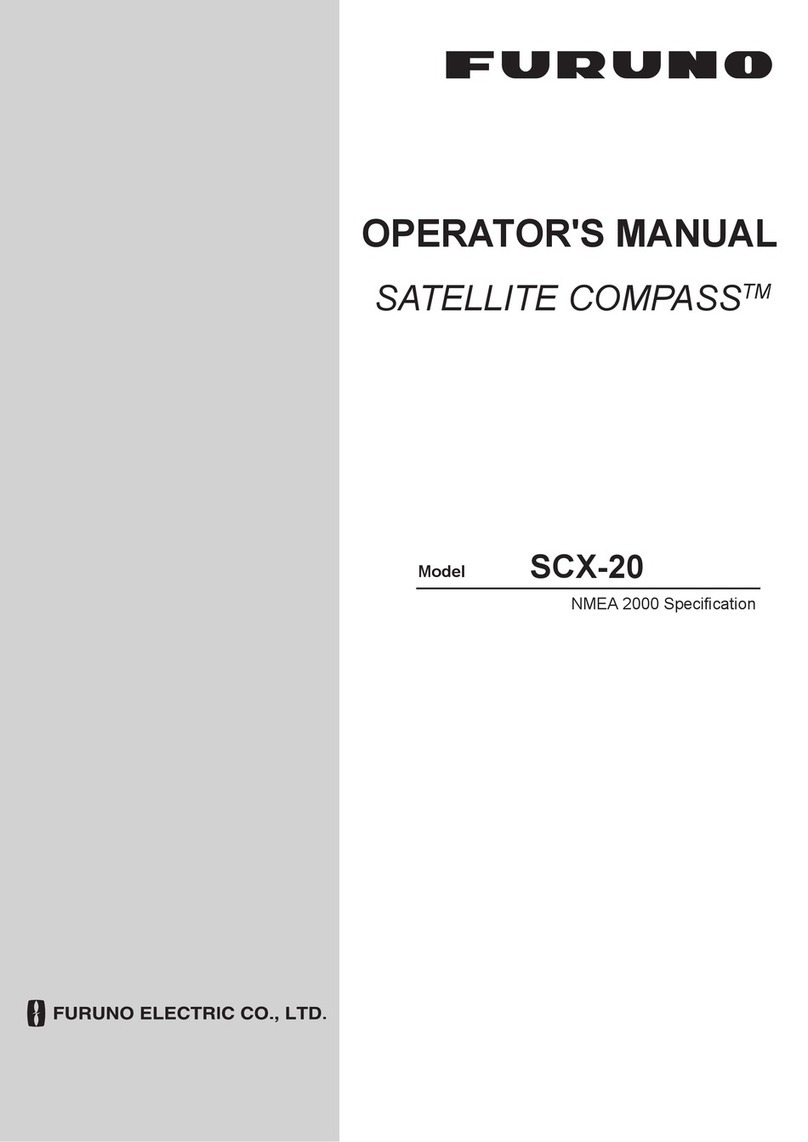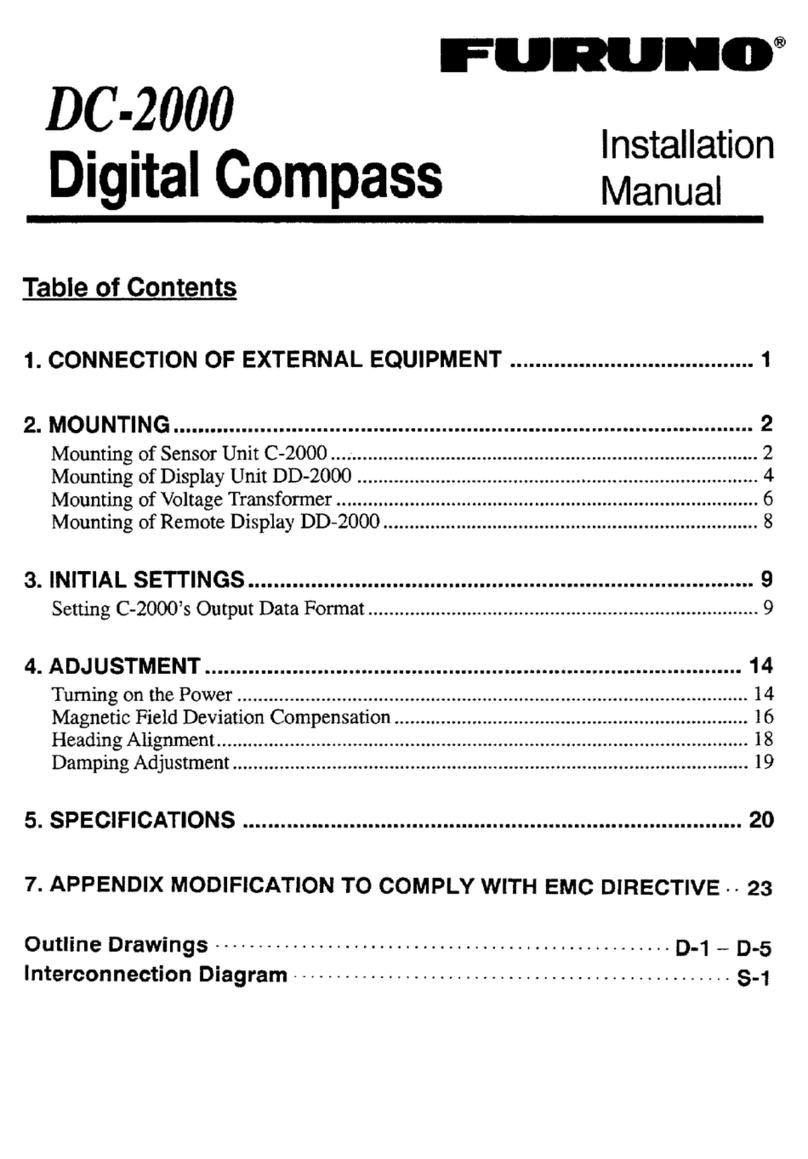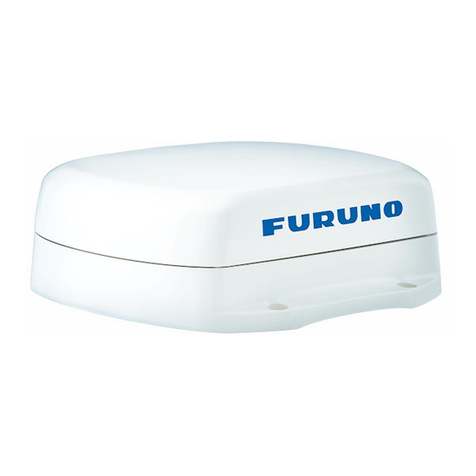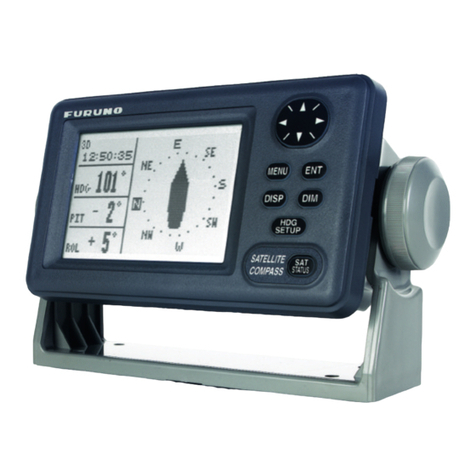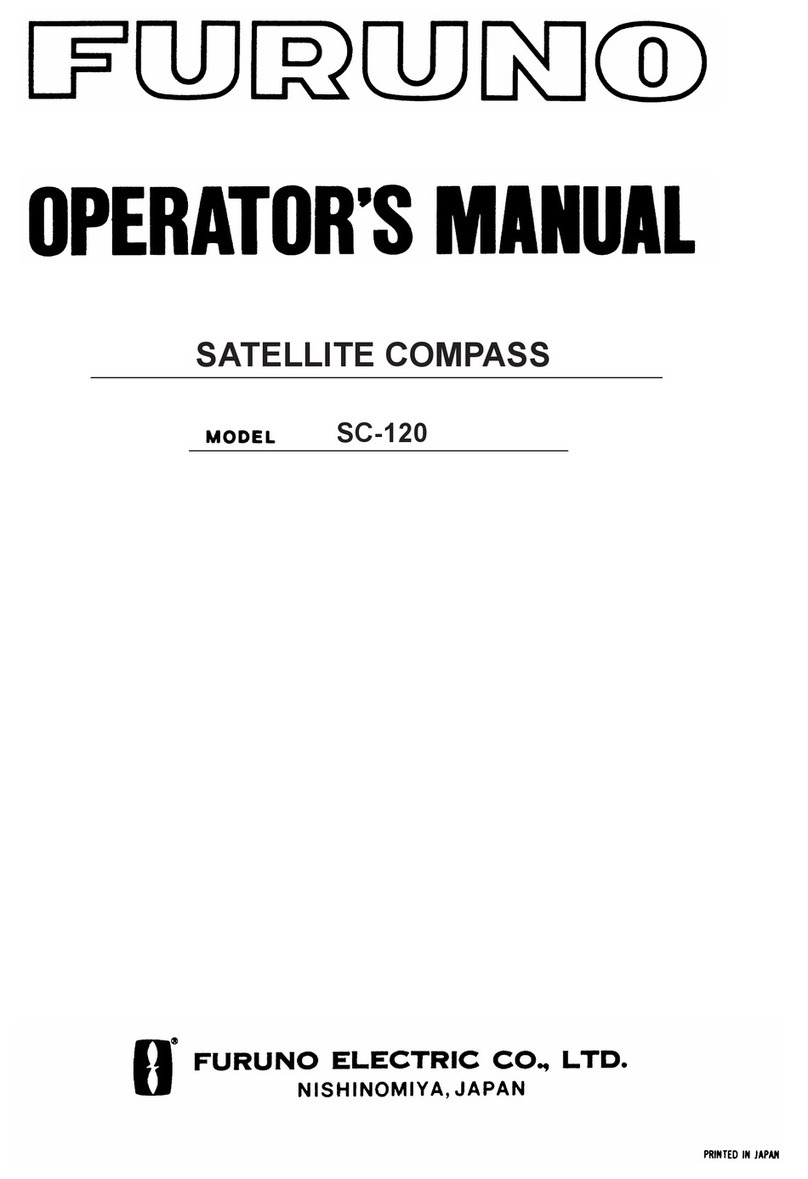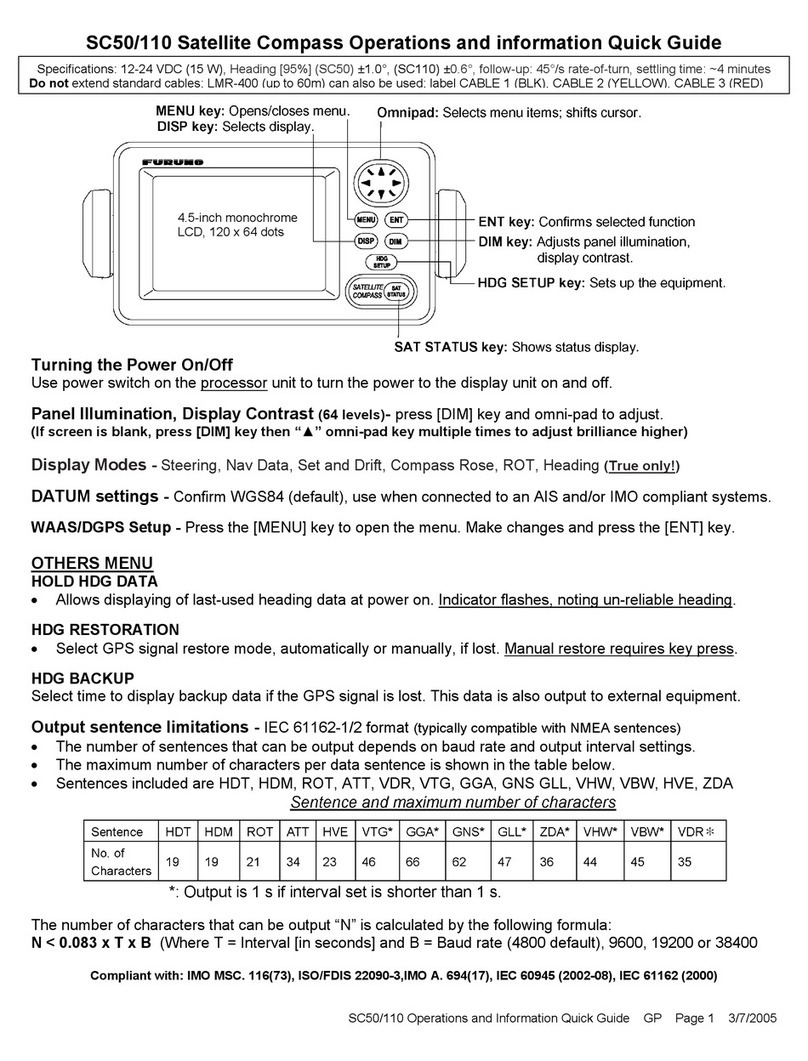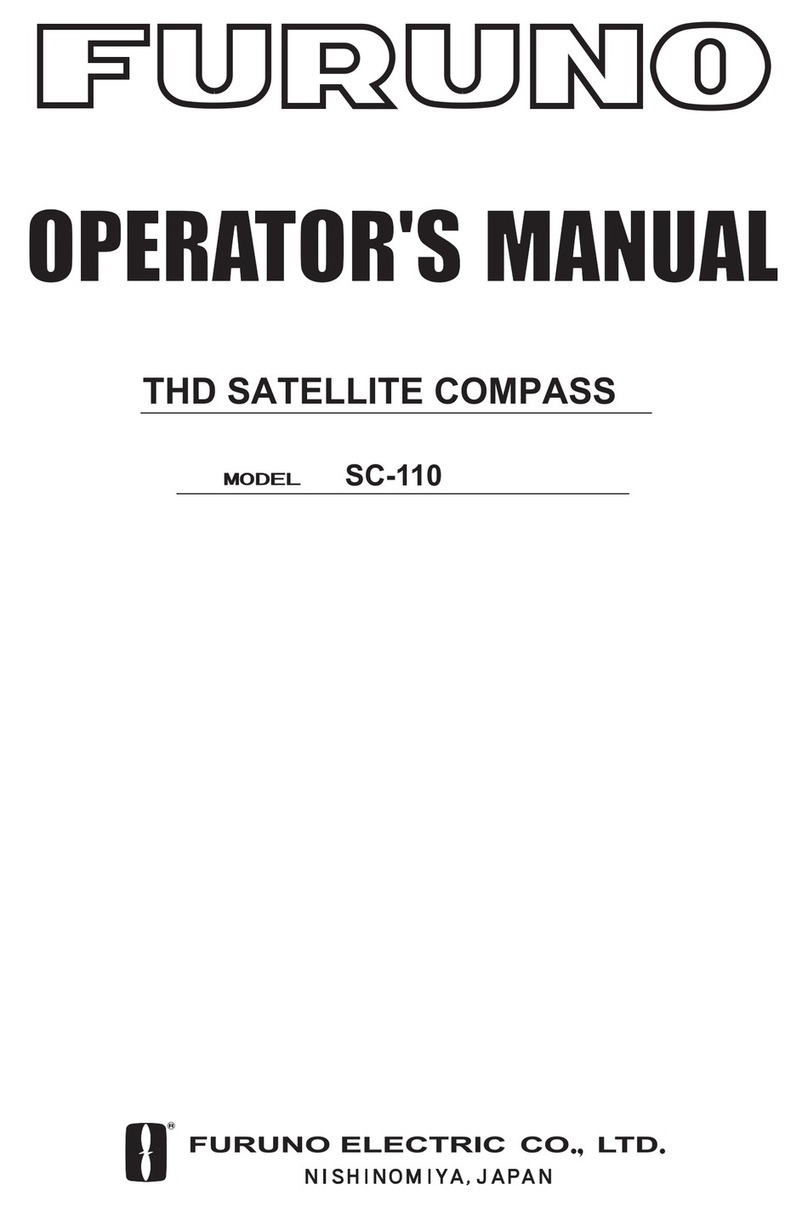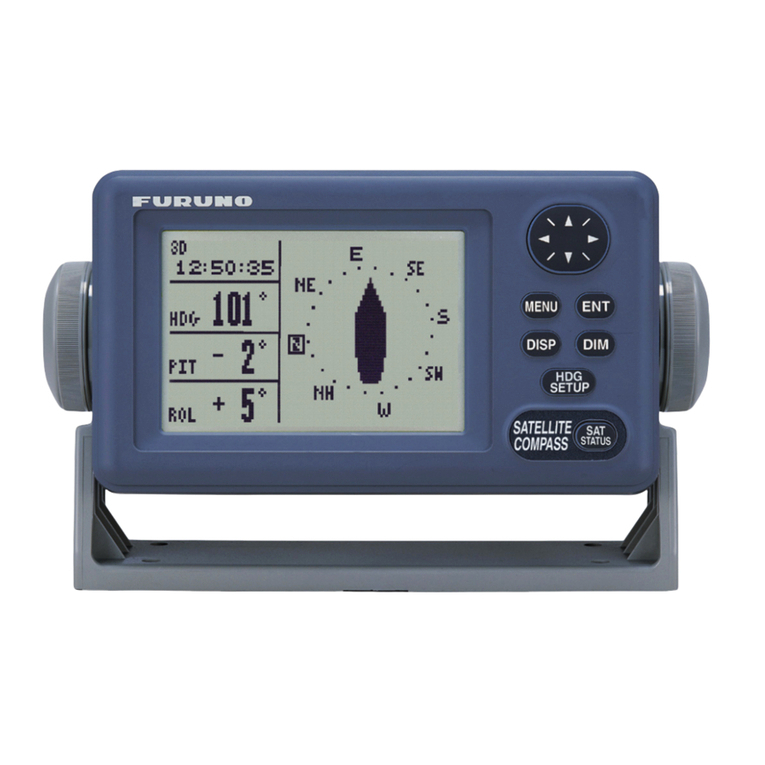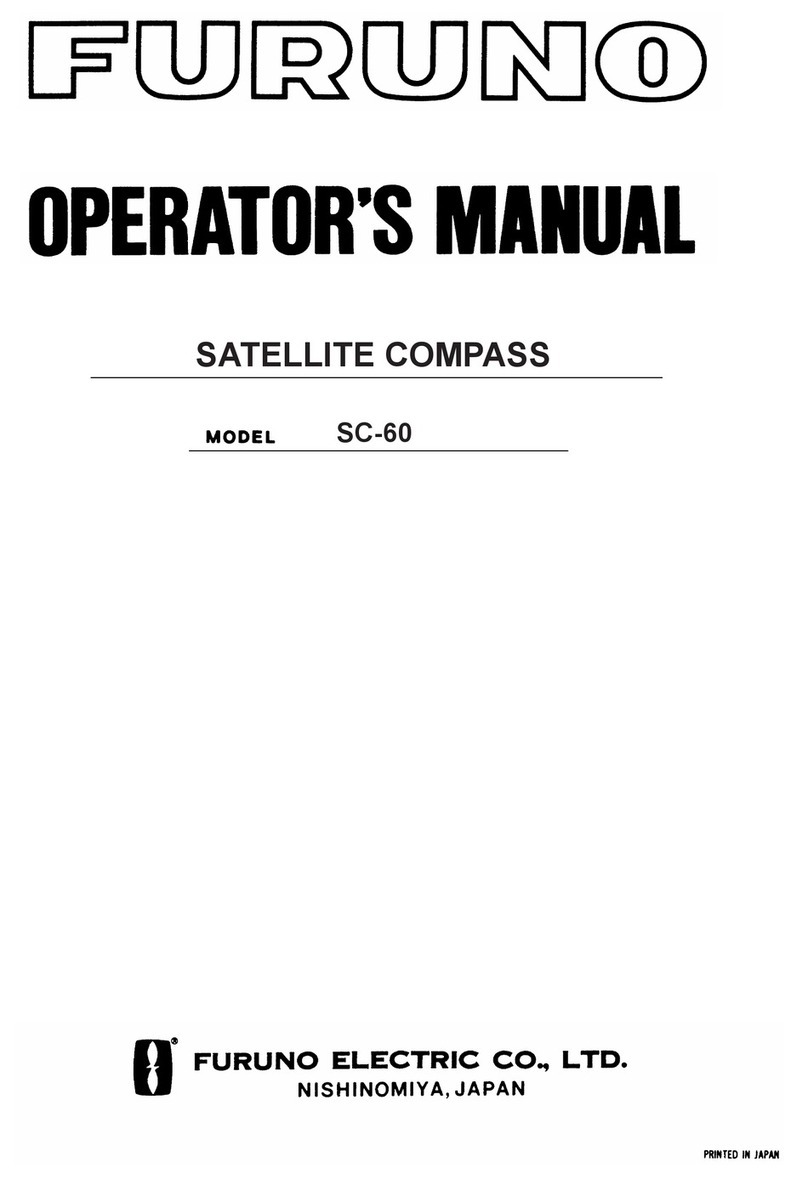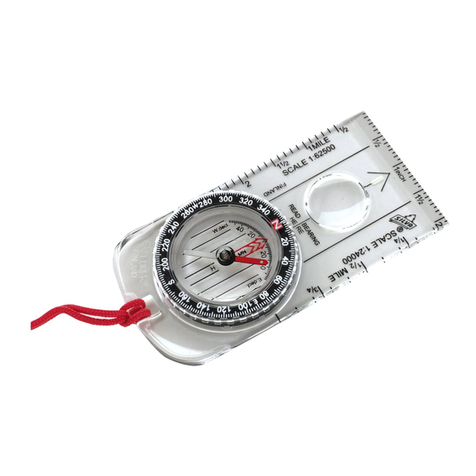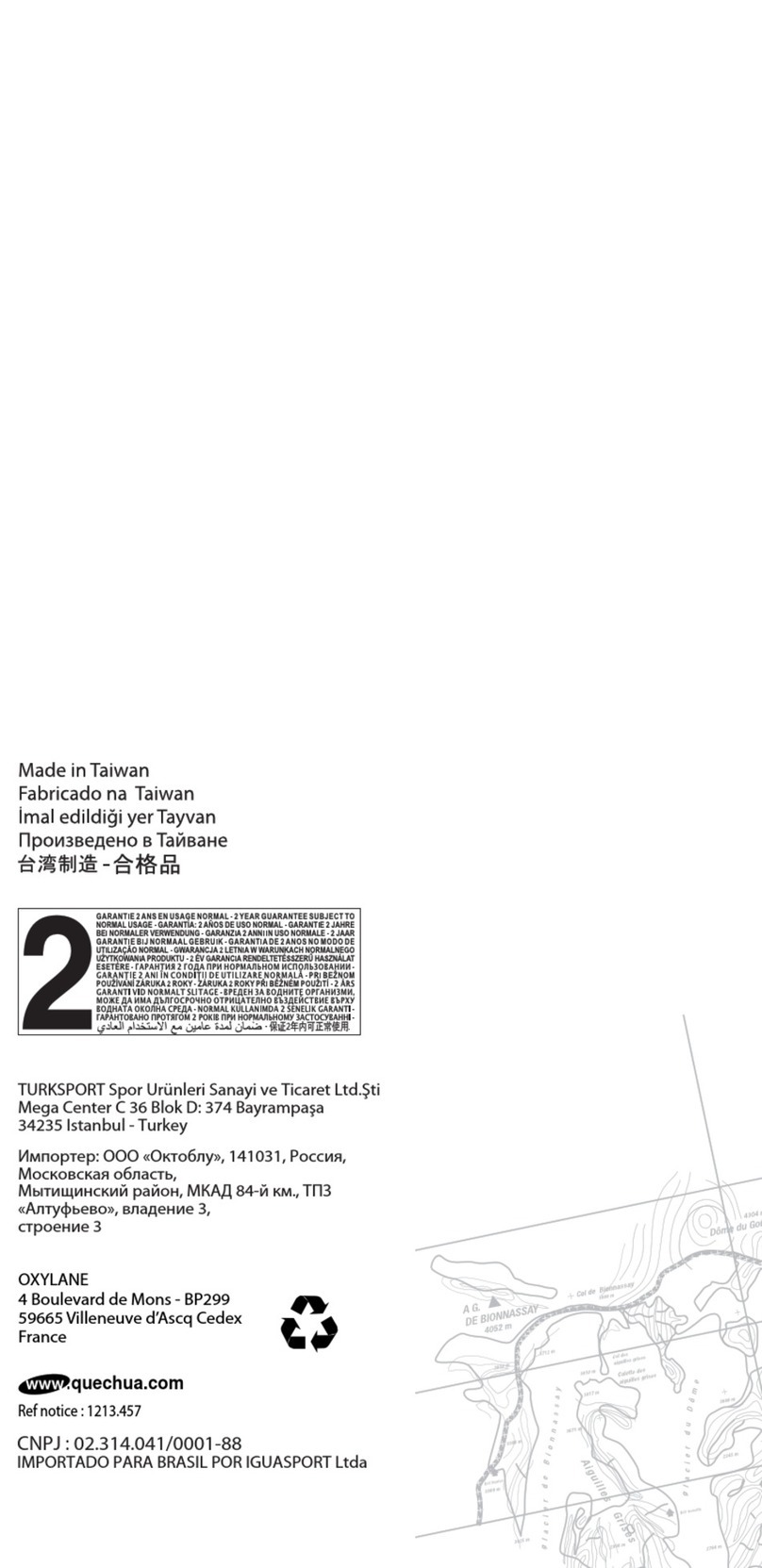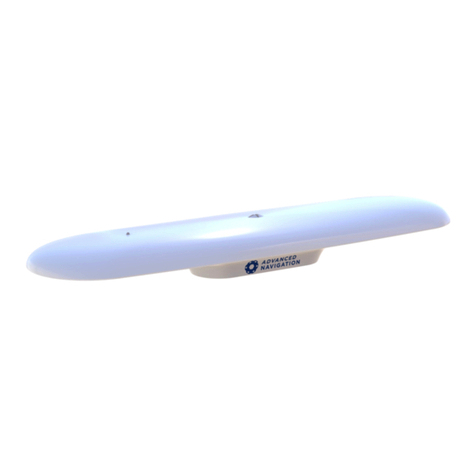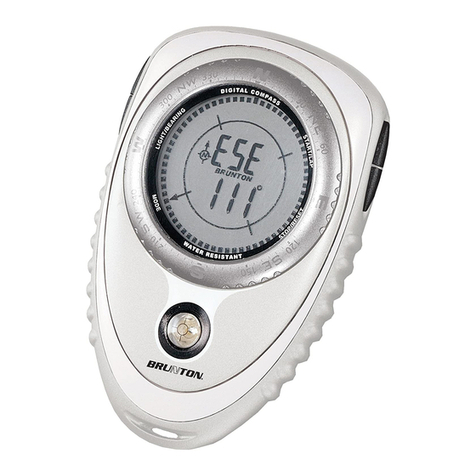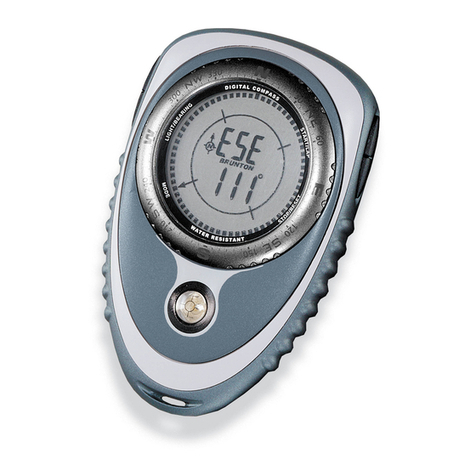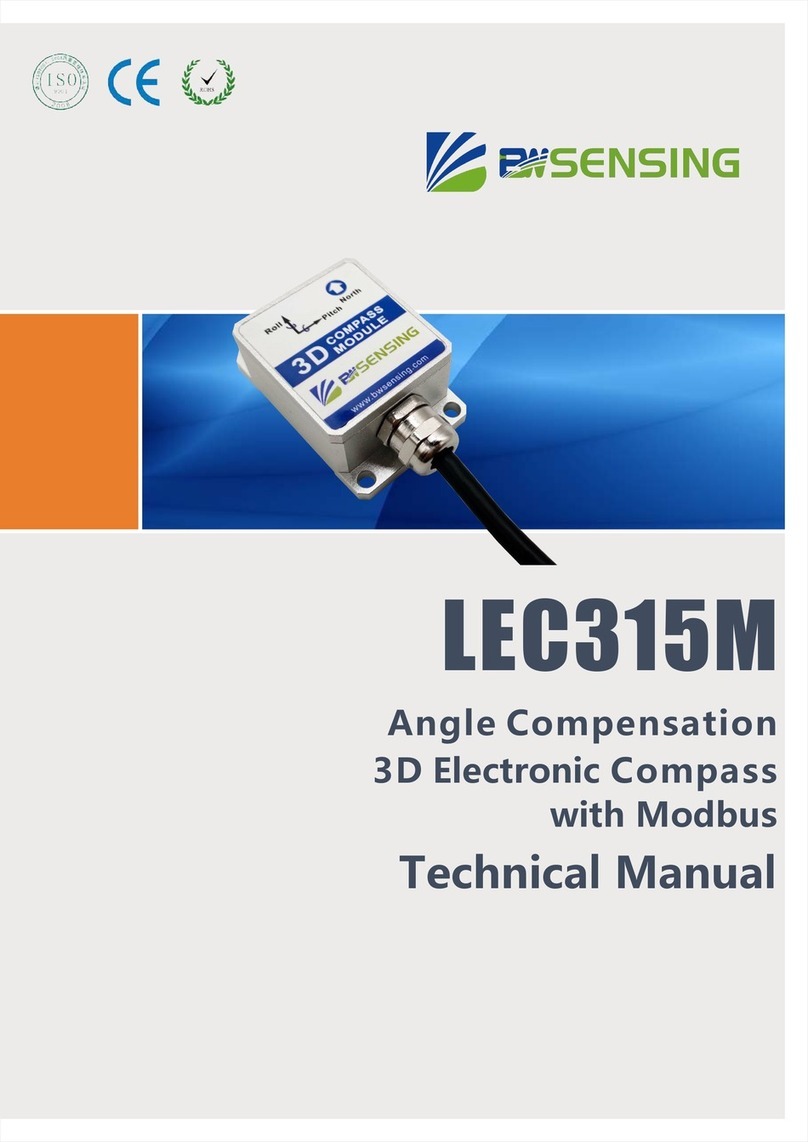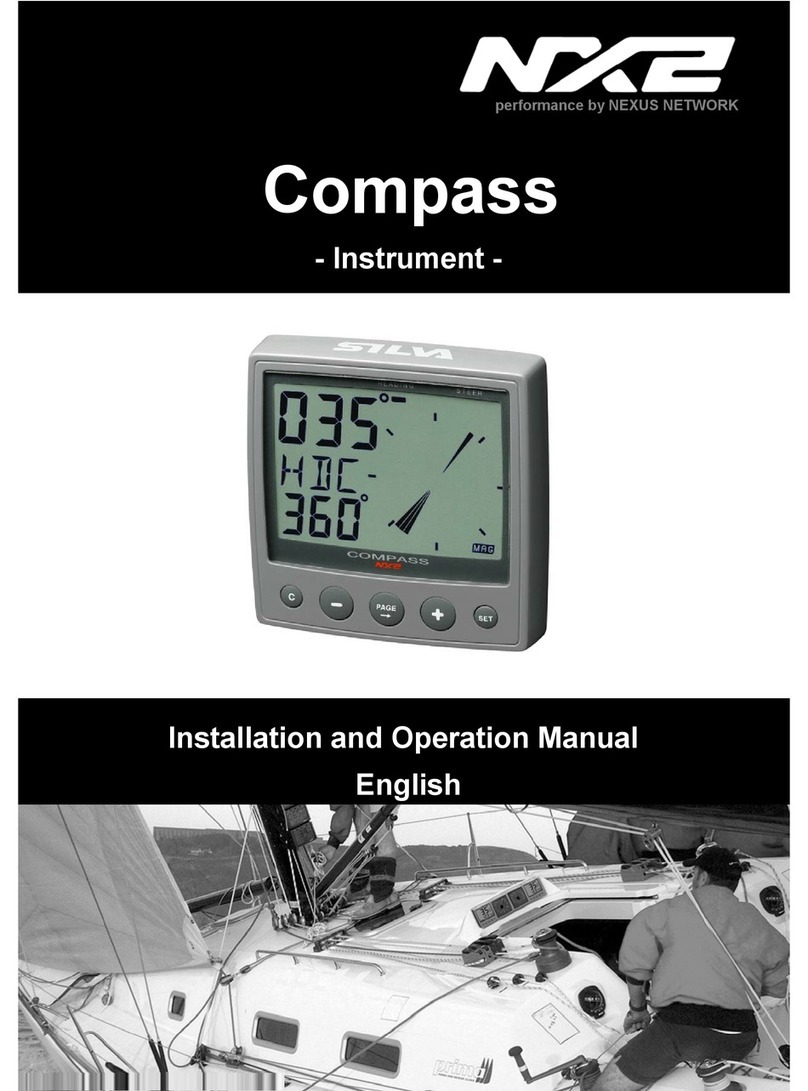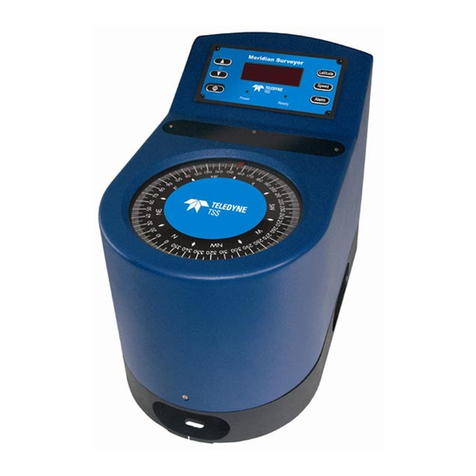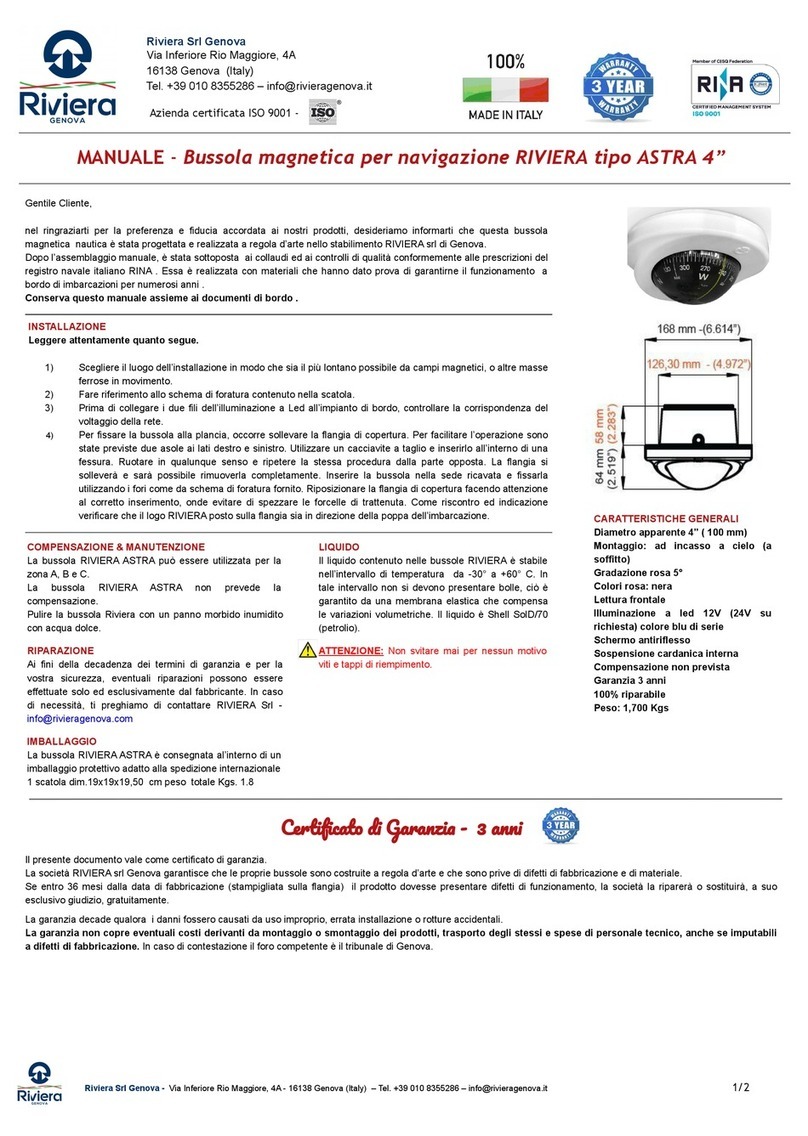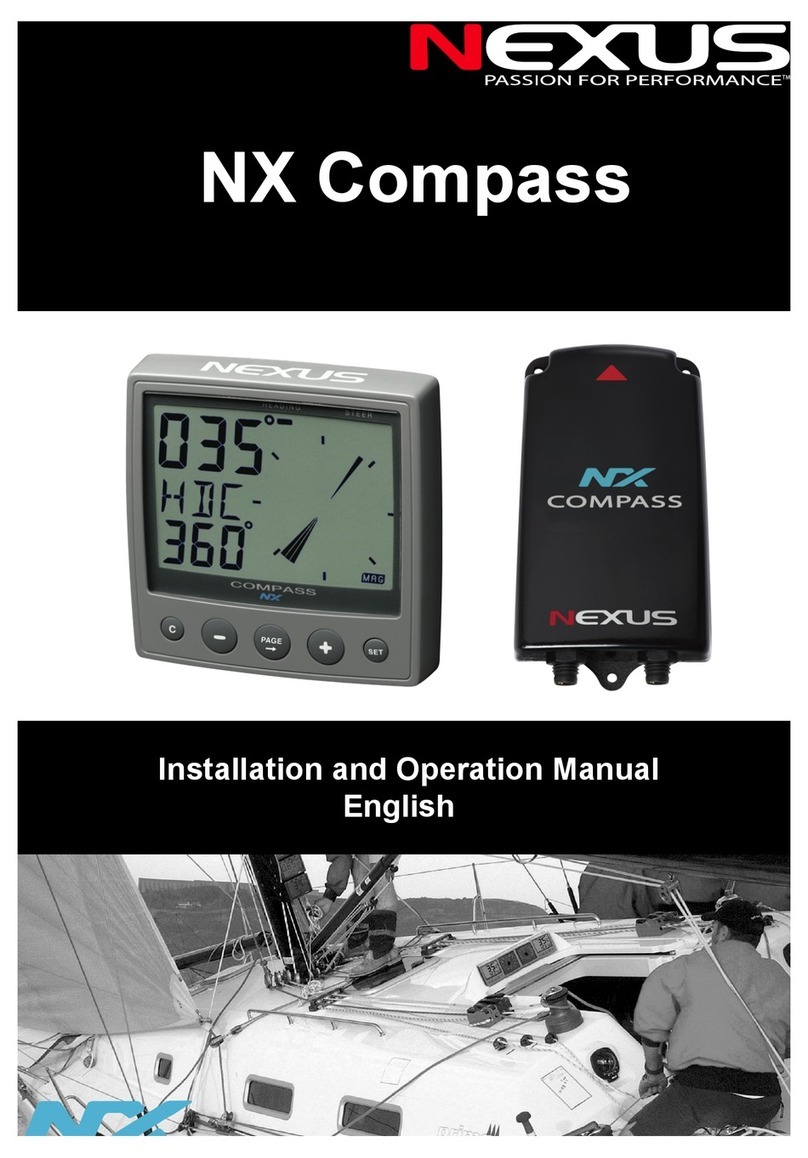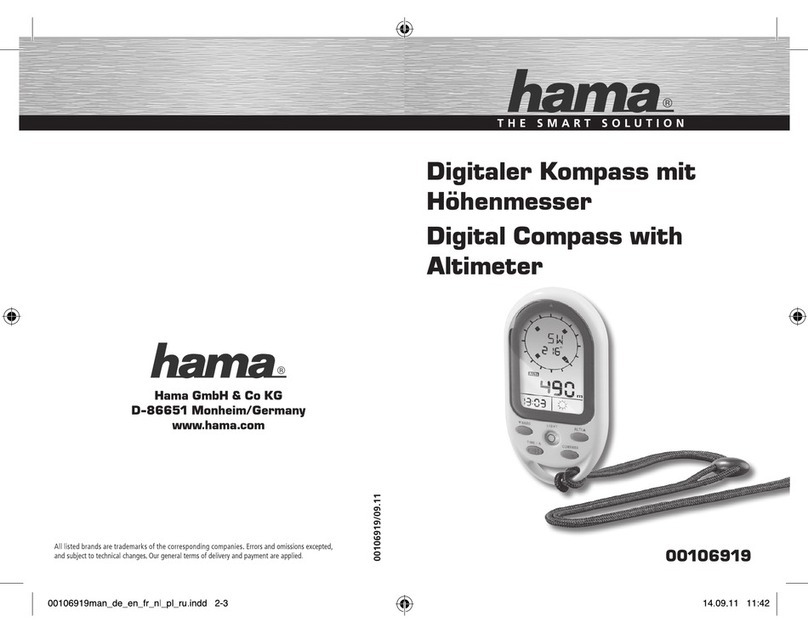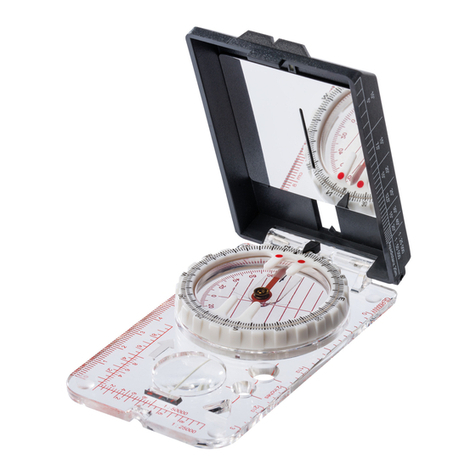iii
TABLE OF CONTENTS
FOREWORD.................................................................................................................... v
SYSTEM CONFIGURATION .......................................................................................... vi
EQUIPMENT LIST......................................................................................................... vii
SPECIFICATIONS ..................................................................................................... SP-1
1INSTALLATION .......................................................................................................1-1
1.1 Mounting Considerations.................................................................................................... 1-1
1.1.1 Antenna unit............................................................................................................ 1-1
1.1.2 Display unit, processor unit..................................................................................... 1-3
1.2 Installing theAntenna Unit.................................................................................................. 1-4
1.2.1 Antenna unit SC-303 .............................................................................................. 1-4
1.2.2 Antenna unit SC-603 .............................................................................................. 1-7
1.3 Installing the Processor Unit............................................................................................. 1-12
1.3.1 Bulkhead mount.................................................................................................... 1-12
1.3.2 Deck mount........................................................................................................... 1-13
1.3.3 Installation on the underside of a desk................................................................. 1-14
1.4 Installing the Display Unit................................................................................................. 1-15
1.4.1 Desktop, overhead mounting................................................................................ 1-15
1.4.2 Flush mount.......................................................................................................... 1-15
1.5 Wiring ............................................................................................................................... 1-17
1.6 Initial Settings................................................................................................................... 1-20
1.6.1 Confirming satellite status..................................................................................... 1-20
1.6.2 Choosing mounting method.................................................................................. 1-21
1.7 Connection of External Equipment................................................................................... 1-22
1.7.1 General wiring....................................................................................................... 1-22
1.7.2 Fabrication of cables............................................................................................. 1-23
2OPERATION............................................................................................................2-1
2.1 Controls.............................................................................................................................. 2-1
2.2 Turning the Power On/Off................................................................................................... 2-2
2.3 Panel Illumination, Display Contrast................................................................................... 2-2
2.4 Choosing a Display ............................................................................................................ 2-3
2.4.1 Description of displays............................................................................................ 2-3
2.5 Alarm Setup........................................................................................................................ 2-6
2.6 Confirming Satellite Status................................................................................................. 2-7
2.7 GPS Setup ......................................................................................................................... 2-8
2.7.1 Displaying the GPS setup menu............................................................................. 2-8
2.7.2 GPS SETUP menu description............................................................................... 2-8
2.8 Output Data........................................................................................................................ 2-9
2.8.1 Heading .................................................................................................................. 2-9
2.8.2 Log pulse.............................................................................................................. 2-13
2.9 System Setup................................................................................................................... 2-14
2.9.1 Geodetic data ....................................................................................................... 2-14
2.9.2 Units of measurement........................................................................................... 2-15
2.9.3 Using local time .................................................................................................... 2-15
2.9.4 Time format........................................................................................................... 2-15
2.9.5 Demonstration mode ............................................................................................ 2-16
2.10 WAAS/DGPS Setup ......................................................................................................... 2-17
2.11 OTHERS Menu ................................................................................................................ 2-19
2.12 TRIP Menu .......................................................................................................................2-20
2.13 Resetting Distance Run.................................................................................................... 2-21
2.14 Choosing External Heading Source for Backup................................................................ 2-21
